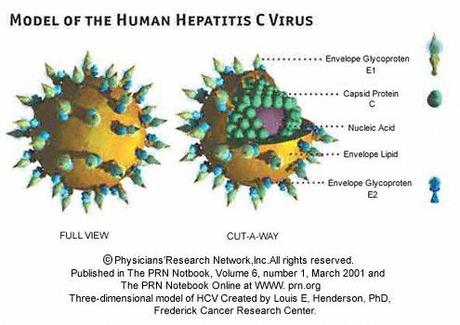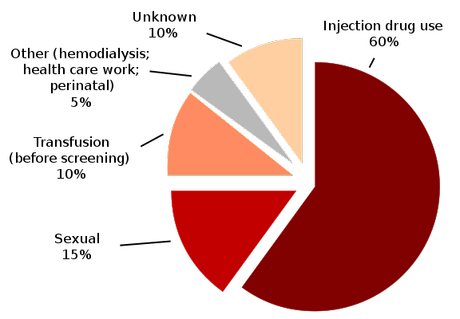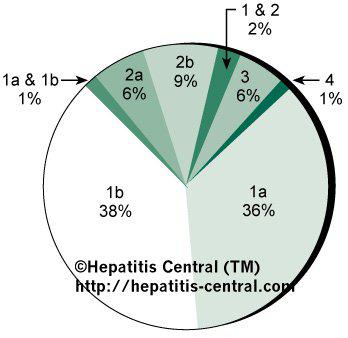For the past few years at Phil’s Stock World, many of my articles have focused on cancer therapies or the robust (or not so robust) big pharma pipelines. I have not delved into many specific diseases, their mechanisms, and potential treatments. Two of the hottest areas in the industry right now are fibrosis and hepatitis C. In the fibrosis area, large deals are being made for early stage compounds in scientifically plausible, but unproven mechanisms (Gilead’s purchase of Arresto Biosciences for $225M, Bristol-Myers buying Amira Pharmaceuticals for $325M). Fibrosis will be a topic for another write-up. The area where there is a flurry of activity is in the treatment of hepatitis C. Vertex and Merck received approval for their new drugs in May 2011, Incivek and Victrelis, respectively, where Roche bought Anadys Pharmaceuticals for $230M, and Gilead is purchasing Pharmassett for $11B!
Hepatitis C (HCV) is a viral disease that is spread by blood to blood contact, and it primarily affects the liver. The infection is often asymptomatic, but chronic infection can lead to scarring of the liver and ultimately to liver cirrhosis. Liver cirrhosis can lead to liver failure and/or other complications, including liver cancer or life-threatening esophageal and gastric varices.
1 There is no known cure or vaccine for HCV, and an estimated 180M people are infected . The shear number of infections makes it an attractive market for pharmaceutical companies, and thus there are many drugs being clinically tested.
Figure 2. HCV Infections
After an HCV infection, the disease enters an acute phase and subsequently, a chronic phase. During the acute phase, people often have flu-like symptoms, decreased appetite, fatigue,abdominal pain, jaundice, and itching. The acute phase is considered less than 6-months. The chronic phase (50-80% of those infected) of the disease is noted by higher liver enzymes (ALT/AST), and is often discovered when people are going through a routine checkup. The liver is often inflamed, and cirrhosis and fibrosis could also begin to set in. Of those that are in the chronic phase of the disease, approximately 20–50% do not respond to treatment. There is a very small chance of clearing the virus spontaneously in chronic HCV carriers (0.5% to 0.74% per year).
Figure 3. Common Genotypes
Like many viruses, hepatitis C has…




